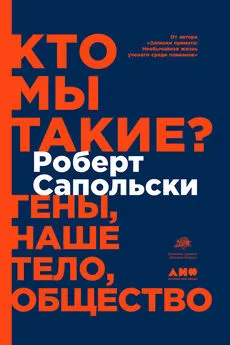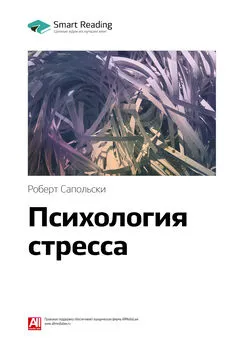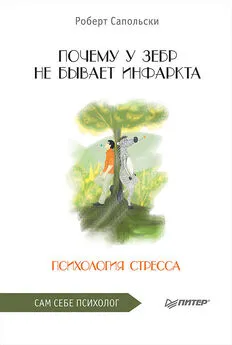Роберт Сапольски - Биология добра и зла. Как наука объясняет наши поступки
- Название:Биология добра и зла. Как наука объясняет наши поступки
- Автор:
- Жанр:
- Издательство:Альпина нон-фикшн
- Год:2019
- Город:Москва
- ISBN:978-5-0013-9051-0
- Рейтинг:
- Избранное:Добавить в избранное
-
Отзывы:
-
Ваша оценка:
Роберт Сапольски - Биология добра и зла. Как наука объясняет наши поступки краткое содержание
Биология добра и зла. Как наука объясняет наши поступки - читать онлайн бесплатно ознакомительный отрывок
Интервал:
Закладка:
529
C. Apicella et al., “Social Networks and Cooperation in Hunter-Gatherers,” Nat 481 (2012): 497; J. Henrich, “Hunter-Gatherer Cooperation,” Nat 481 (2012): 449.
530
E. Thomas, The Harmless People (New York: Vintage Books, 1959); M. Shostak Nisa: The Life and Words of a!Kung Woman (Cambridge, MA: Harvard University Press, 2006); R. Lee, The!Kung San: Men, Women and Work in a Foraging Society (Cambridge: Cambridge University Press, 1979).
531
C. Ember, “Myths About Hunter-Gatherers,” Ethnology 17 (1978): 439.
532
Ferguson 1995, цит. соч.; Fry 2009, цит. соч.; R. B. Lee, “Hunter-Gatherers on the Best-Seller List: Steven Pinker and the ‘Bellicose School’s’ Treatment of Forager Violence,” J Aggression, Conflict and Peace Res 6 (2014): 216; M. Guenther, “War and Peace Among Kalahari San,” J Aggression, Conflict and Peace Res 6 (2014): 229; D. P. Fry and P. Soderberg, “Myths About Hunter-Gatherers Redux: Nomadic Forager War and Peace,” J Aggression, Conflict and Peace Res 6 (2014): 255; R. Kelley, Warless Societies and the Evolution of War (Ann Arbor: University of Michigan Press, 2000).
533
M. M. Lahr et al., “Inter-group Violence Among Early Holocene Hunter-Gatherers of West Turkana, Kenya,” Nat 529 (2016): 394.
534
C. Boehm, Moral Origins: The Evolution of Virtue, Altruism, and Shame (New York: Basic Books, 2012).
535
M. C. Stiner et al., “Cooperative Hunting and Meat Sharing 400–200 kya at Qesem Cave, Israel,” PNAS 106 (2009): 13207.
536
P. Wiessner, “The Embers of Society: Firelight Talk Among the Ju / ’hoansi Bushmen,” PNAS 111 (2014): 14013; P. Wiessner, “Norm Enforcement Among the Ju / ’hoansi Bushmen: A Case of Strong Reciprocity?” Hum Nat 16 (2004): 115.
537
T. Dobzhansky, “Nothing in Biology Makes Sense Except in the Light of Evolution,” Am Biol Teacher 35 (1973): 125.
538
A. J. Carter and A. Q. Nguyen, “Antagonistic Pleiotropy as a Widespread Mechanism for the Maintenance of Polymorphic Disease Alleles,” BMC Med Genetics 12 (2011): 160.
539
J. Gratten et al., “Life History Trade-offs at a Single Locus Maintain Sexually Selected Genetic Variation,” Nat 502 (2013): 93.
540
A. Brown, The Darwin Wars: The Scientific Battle for the Soul of Man (New York: Touchstone/Simon and Schuster, 1999).
541
V. C. Wynne-Edwards, Evolution Through Group Selection (London: Blackwell Science, 1986).
542
W. D. Hamilton, “The Genetical Evolution of Social Behavior,” J Theoretical Biol 7 (1964): 1; G. C. Williams, Adaptation and Natural Selection (Princeton, NJ: Princeton University Press, 1966). См. также: E. O. Wilson, Sociobiology: The New Synthesis (Cambridge, MA: Harvard University Press, 1975); and R. Dawkins, The Selfish Gene (Oxford: Oxford University Press, 1976).
543
S. B. Hrdy, The Langurs of Abu: Female and Male Strategies of Reproduction (Cambridge, MA: Harvard University Press, 1977).
544
Спорная патология: P. Dolhinow, “Normal Monkeys?” Am Scientist 65 (1977): 266. Просто мужская агрессия: R. Sussman et al., “Infant Killing as an Evolutionary Strategy: Reality or Myth?” Evolutionary Anthropology 3 (1995): 149.
545
Приматы: G. Hausfater and S. Hrdy, Infanticide: Comparative and Evolutionary Perspectives (New York: Aldine, 1984); M. Hiraiwa-Hasegawa, “Infanticide in Primates and a Possible Case of Male-Biased Infanticide in Chimpanzees,” in Animal Societies: Theories and Facts , ed. J. L. Brown and J. Kikkawa (Tokyo: Japan Scientific Societies Press, 1988), pp. 125–39; S. Hrdy, “Infanticide Among Mammals: A Review, Classification, and Examination of the Implications for the Reproductive Strategies of Females,” Ethology and Sociobiology 1 (1979): 13. Rodents, lions: G. Perrigo et al., “Social Inhibition of Infanticide in Male House Mice,” Ecology Ethology and Evolution 5 (1993): 181; A. Pusey and C. Packer, 1984, “Infanticide in Carnivores,” in Hausfater and Hrdy, Infanticide ; S. Gursky-Doyen, “Infanticide by a Male Spectral Tarsier ( Tarsius spectrum ),” Primates 52 (2011): 385. См. также: D. Lukas and E. Huchard, “The Evolution of Infanticide by Males in Mammalian Societies,” Sci 346 (2014): 841.
546
J. Berger, “Induced Abortion and Social Factors in Wild Horses,” Nat 303 (1983): 59; E. Roberts et al., “A Bruce Effect in Wild Geladas,” Sci 335 (2012): 1222; H. Bruce, “An Exteroceptive Block to Pregnancy in the Mouse,” Nat 184 (1959): 105.
547
A. Pusey and K. Schroepfer-Walker, “Female Competition in Chimpanzees,” Philosophical Transactions of the Royal Soc of London B 368 (2013): 1471.
548
D. Fossey, “Infanticide in Mountain Gorillas ( Gorilla gorilla beringei ) with Comparative Notes on Chimpanzees,” in Hausfater and Hrdy, Infanticide .
549
L. Fairbanks, “Reciprocal Benefits of Allomothering for Female Vervet Monkeys,” Animal Behav 40 (1990): 553.
550
V. Baglione et al., “Kin Selection in Cooperative Alliances of Carrion Crows,” Sci 300 (2003): 1947.
551
J. Buchan et al., “True Paternal Care in a Multi-male Primate Society,” Nat 425 (2003): 179.
552
D. Cheney and R. Seyfarth, How Monkeys See the World: Inside the Mind of Another Species (Chicago: University of Chicago Press, 1992).
553
D. Cheney and R. Seyfarth, “Recognition of Other Individuals’ Social Relationships by Female Baboons,” Animal Behav 58 (1999): 67; R. Wittig et al., «Kin-Mediated Reconciliation Substitutes for Direct Reconciliation in Female Baboons,” Proc Royal Soc B 274 (2007): 1109.
554
T. Bergman et al., “Hierarchical Classification by Rank and Kinship in Baboons,” Sci 203 (2003): 1234.
555
H. Fisher and H. Hoekstra, “Competition Drives Cooperation Among Closely Related Sperm of Deer Mice,” Nat 463 (2010): 801.
556
J. Hoogland, “Nepotism and Alarm Calling in the Black-Tailed Prairie Dog ( Cynomys ludovicianus ),” Animal Behav 31 (1983): 472; G. Schaller, The Serengeti Lion: A Study of Predator-Prey Relations (Chicago: University of Chicago Press, 1972); P. Sherman, “Recognition Systems,” in Behavioural Ecology , ed. J. R. Krebs and N. B. Davies (Oxford: Blackwell Scientific, 1997); C. Packer et al., “A Molecular Genetic Analysis of Kinship and Cooperation in African Lions,” Nat 351 (1991): 6327; A. Pusey and C. Packer, «Non-offspring Nursing in Social Carnivores: Minimizing the Costs,” Behav Ecology 5 (1994): 362.
557
К сноске: G. Alvarez et al., “The Role of Inbreeding in the Extinction of a Europrean Royal Dynasty,” PLoS ONE 4 (2009): e5174.
558
Теоретическая модель: B. Bengtsson, “Avoiding Inbreeding: At What Cost?” J Theoretical Biol 73 (1978): 439.
559
Насекомые: S. Robinson et al., “Preference for Related Mates in the Fruit Fly, Drosophila melanogaster ,” Animal Behav 84 (2012): 1169. Ящерицы: M. Richard et al., “Optimal Level of Inbreeding in the Common Lizard,” Proc Royal Soc of London B 276 (2009): 2779. Рыбы и родители-родственники, вкладывающие больше в свое потомство: T. Thünken et al., “Active Inbreeding in a Cichlid Fish and Its Adaptive Significance,” Curr Biol 17 (2007): 225. Разные птицы: P. Bateson, “Preferences for Cousins in Japanese Quail,” Nat 295 (1982): 236; L. Cohen and D. Dearborn, “Great Frigatebirds, Fregata minor , Choose Mates That Are Genetically Similar,” Animal Behav 68 (2004): 1129; N. Burley et al., “Social Preference of Zebra Finches for Siblings, Cousins and Non-kin,” Animal Behav 39 (1990): 775. Обман моногамии птицами: O. Kleven et al., “Extrapair Mating Between Relatives in the Barn Swallow: A Role for Kin Selection?” Biol Lett 1 (2005): 389; C. Wang and X. Lu, “Female Ground Tits Prefer Relatives as Extra-pair Partners: Driven by Kin-Selection?” Mol Ecology 20 (2011): 2851. Я полагаю, что ни один человек на свете не доберется до этого предложения, но если все-таки вы добрались и читаете его, то, пожалуйста, напишите мне, я бы очень хотел поздравить вас с исключительным читательским талантом. Вот мой адрес: sapolsky@stanford.edu. Грызуны: S. Sommer, “Major Histocompatibility Complex and Mate Choice in a Monogamous Rodent,” Behav Ecology and Sociobiology 58 (2005): 181; C. Barnard and J. Fitzsimons, “Kin Recognition and Mate Choice in Mice: The Effects of Kinship, Familiarity and Interference on Intersexual Selection,” Animal Behav 36 (1988): 1078; M. Peacock and A. Smith, “Nonrandom Mating in Pikas Ochotona princeps : Evidence for Inbreeding Between Individuals of Intermediate Relatedness,” Mol Ecology 6 (1997): 801.
560
A. Helgason et al., “An Association Between the Kinship and Fertility of Human Couples,” Sci 319 (2008): 813; S. Jacob et al., “Paternally Inherited HLA Alleles Are Associated with Women’s Choice of Male Odor,” Nat Genetics 30 (2002): 175.
561
T. Shingo et al., “Pregnancy-Stimulated Neurogenesis in the Adult Female Forebrain Mediated by Prolactin,” Sci 299 (2003): 117; C. Larsen and D. Grattan, “Prolactin, Neurogenesis, and Maternal Behaviors,” Brain, Behav and Immunity 26 (2012): 201.
562
W. D. Hamilton, “The Genetical Evolution of Social Behaviour,” J Theoretical Biol 7 (1964): 1.
563
S. West and A. Gardner, “Altruism, Spite and Greenbeards,” Sci 327 (2010): 1341.
564
S. Smukalla et al., “FLO1 Is a Variable Green Beard Gene That Drives Biofilm-like Cooperation in Budding Yeast,” Cell 135 (2008): 726; E. Queller et al., «Single-Gene Greenbeard Effects in the Social Amoeba Dictyostelium discoideum ,” Sci 299 (2003): 105.
565
B. Kerr et al., “Local Dispersal Promotes Biodiversity in a Real-Life Game of Rock-Paper-Scissors,” Nat 418 (2002): 171; J. Nahum et al., “Evolution of Restraint in a Structured Rock-Paper-Scissors Community,” PNAS 108 (2011): 10831.
Читать дальшеИнтервал:
Закладка:
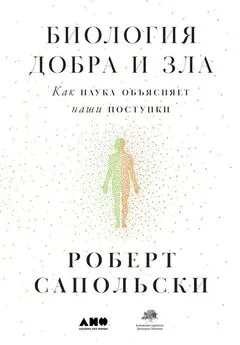
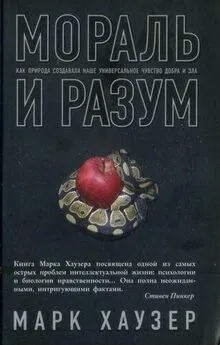
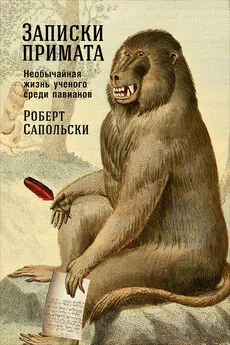
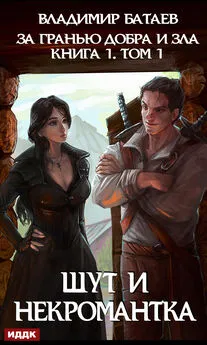

![Роберт Сапольски - Игры тестостерона и другие вопросы биологии поведения [litres]](/books/1074102/robert-sapolski-igry-testosterona-i-drugie-vopros.webp)
